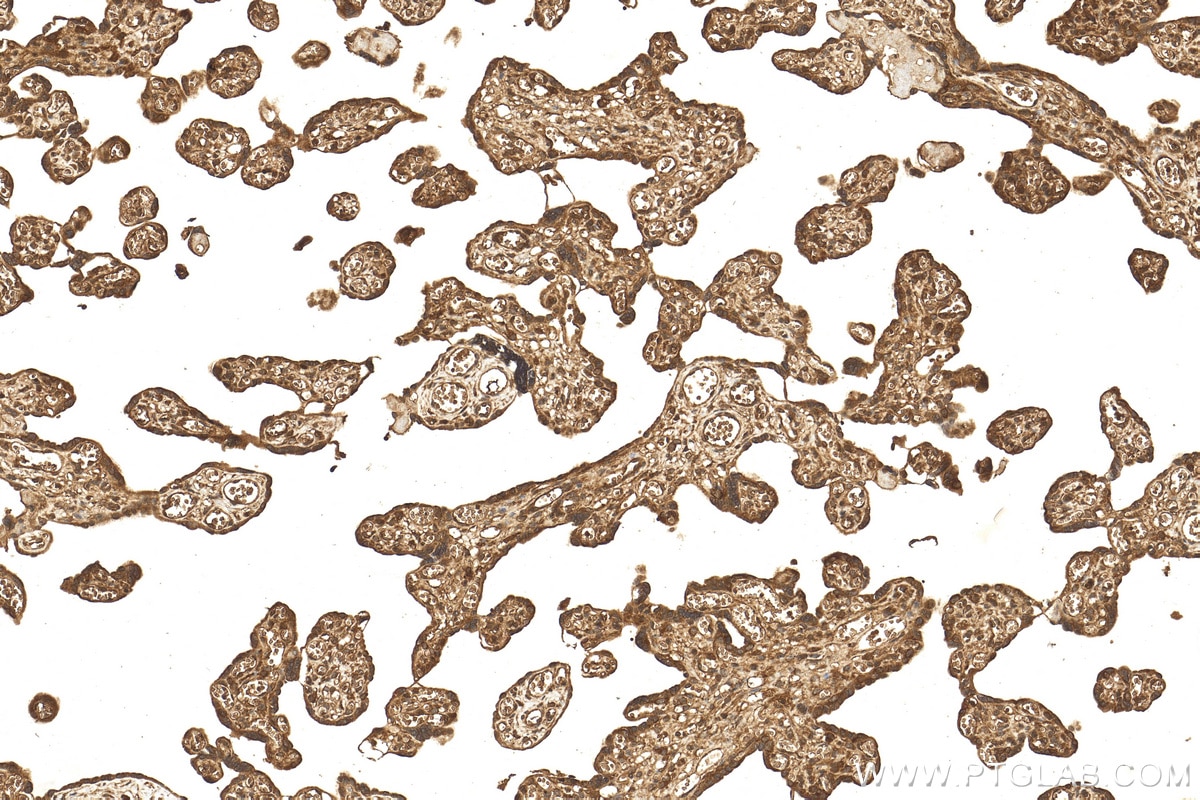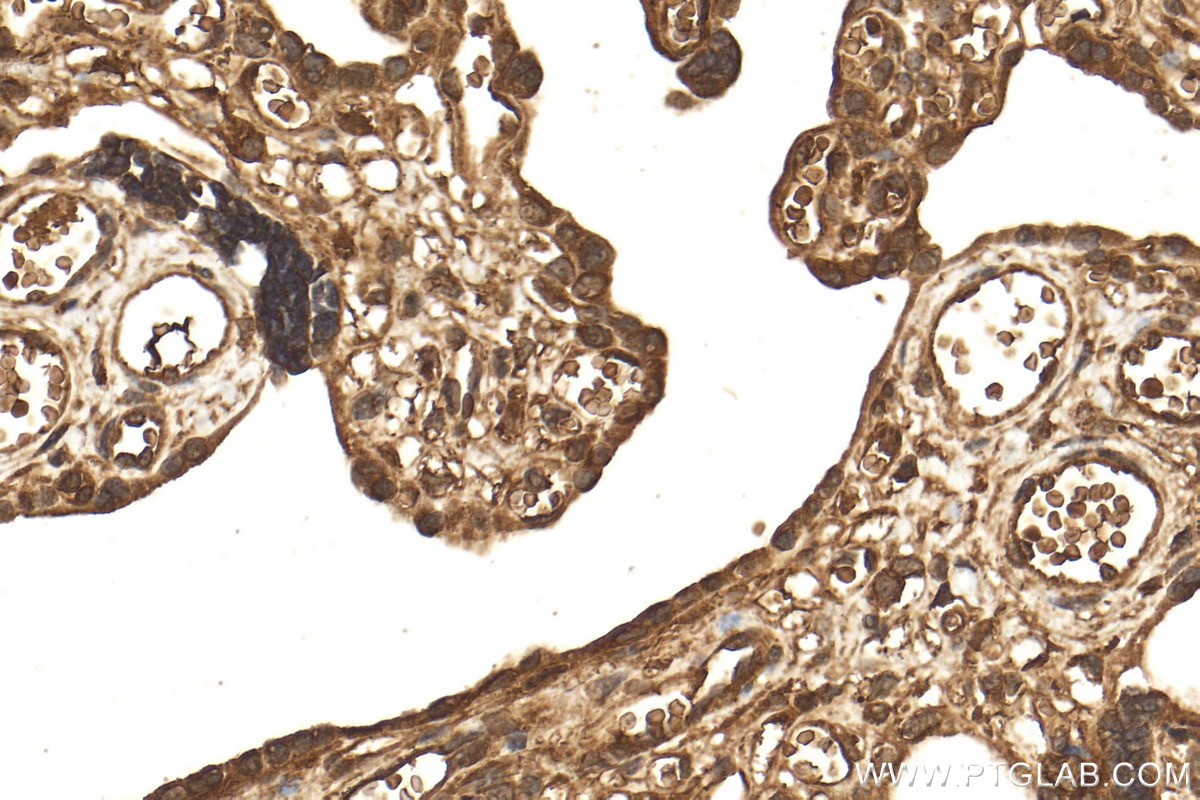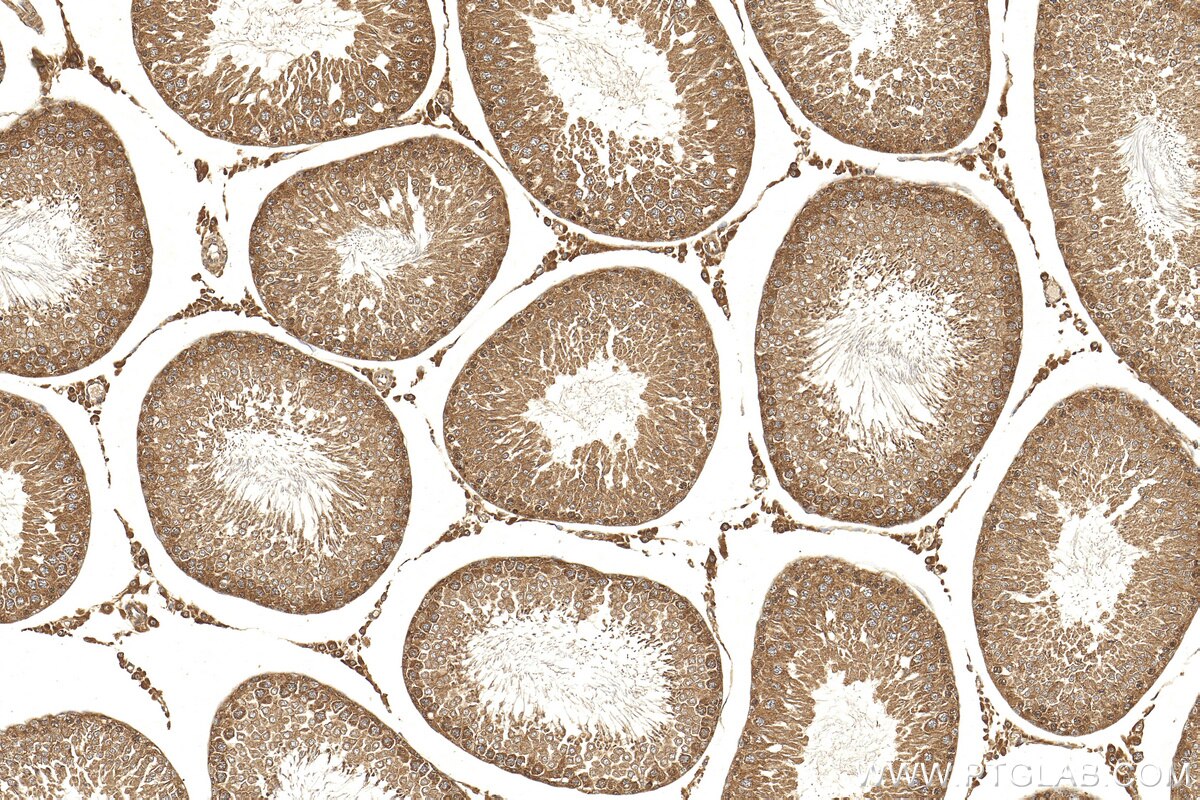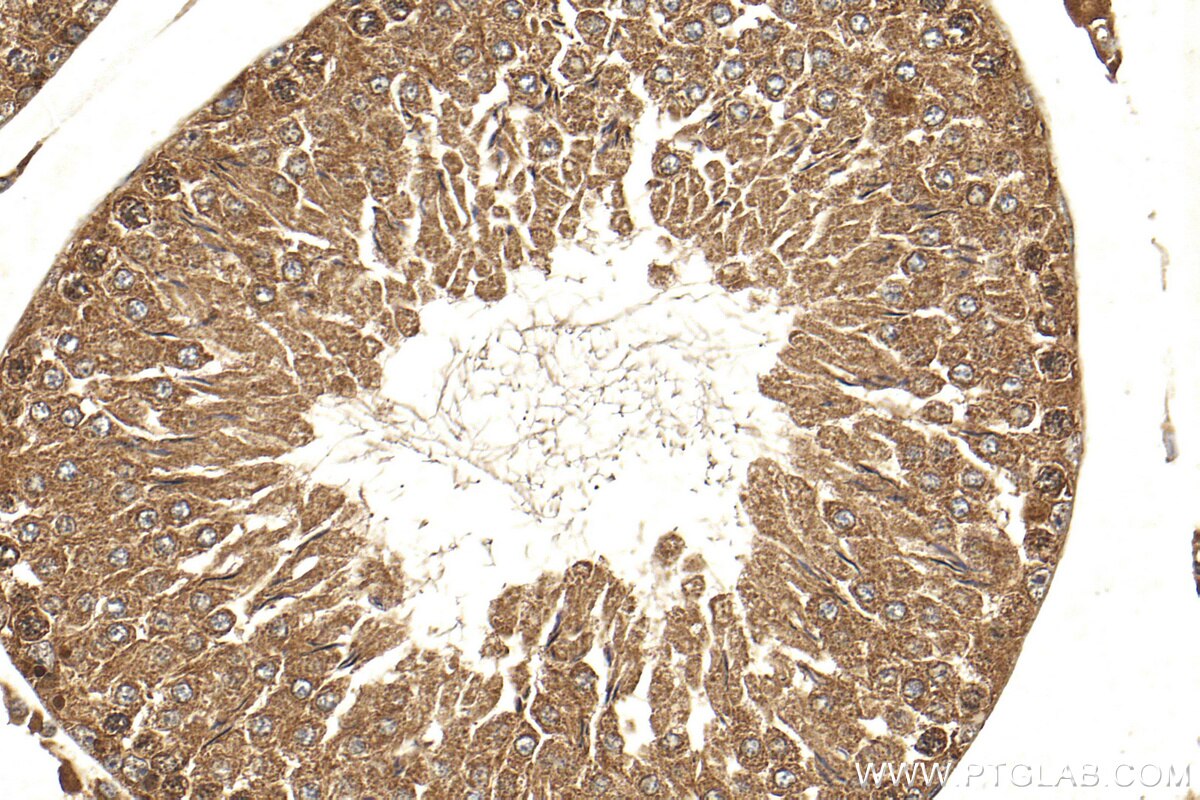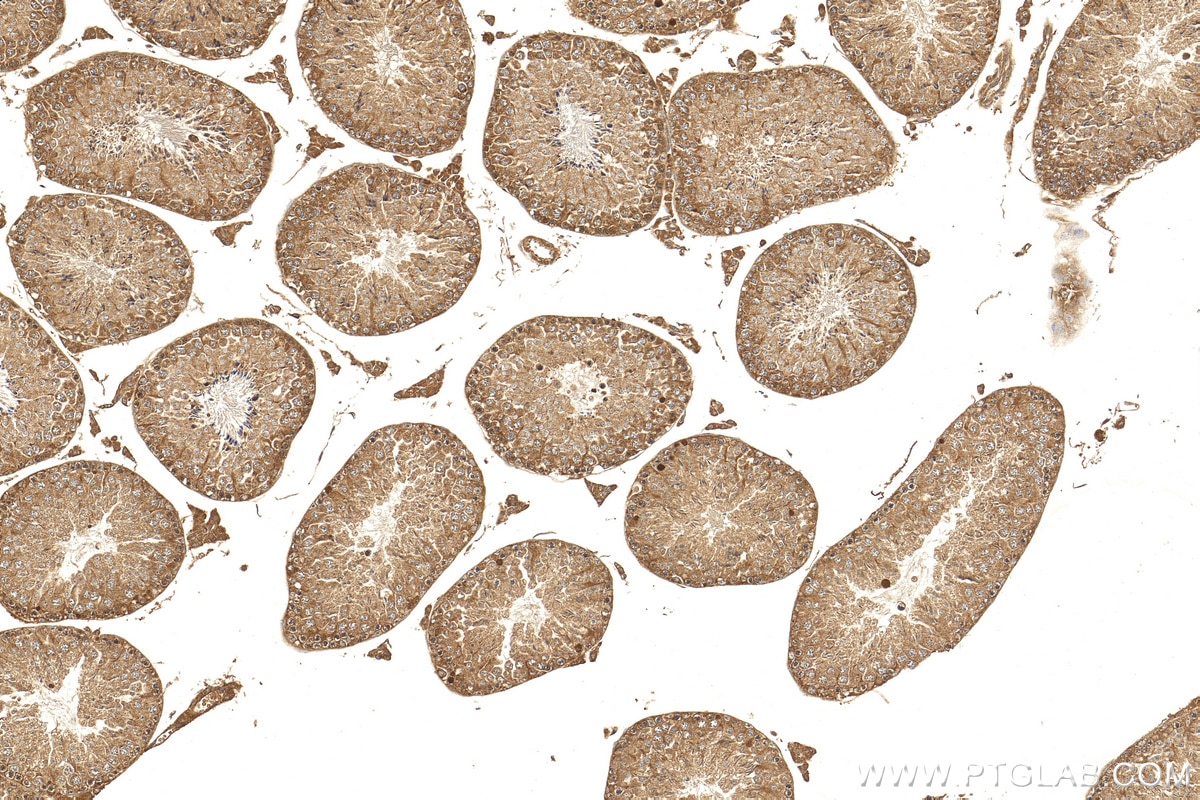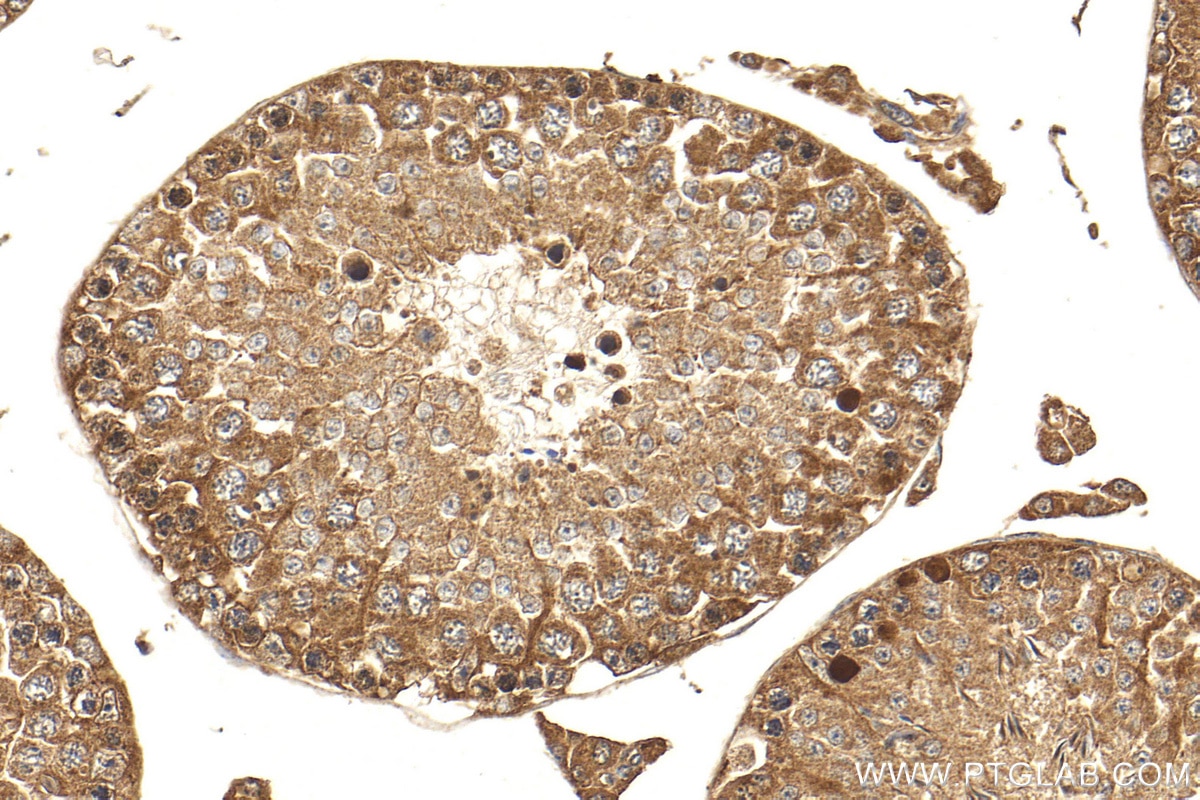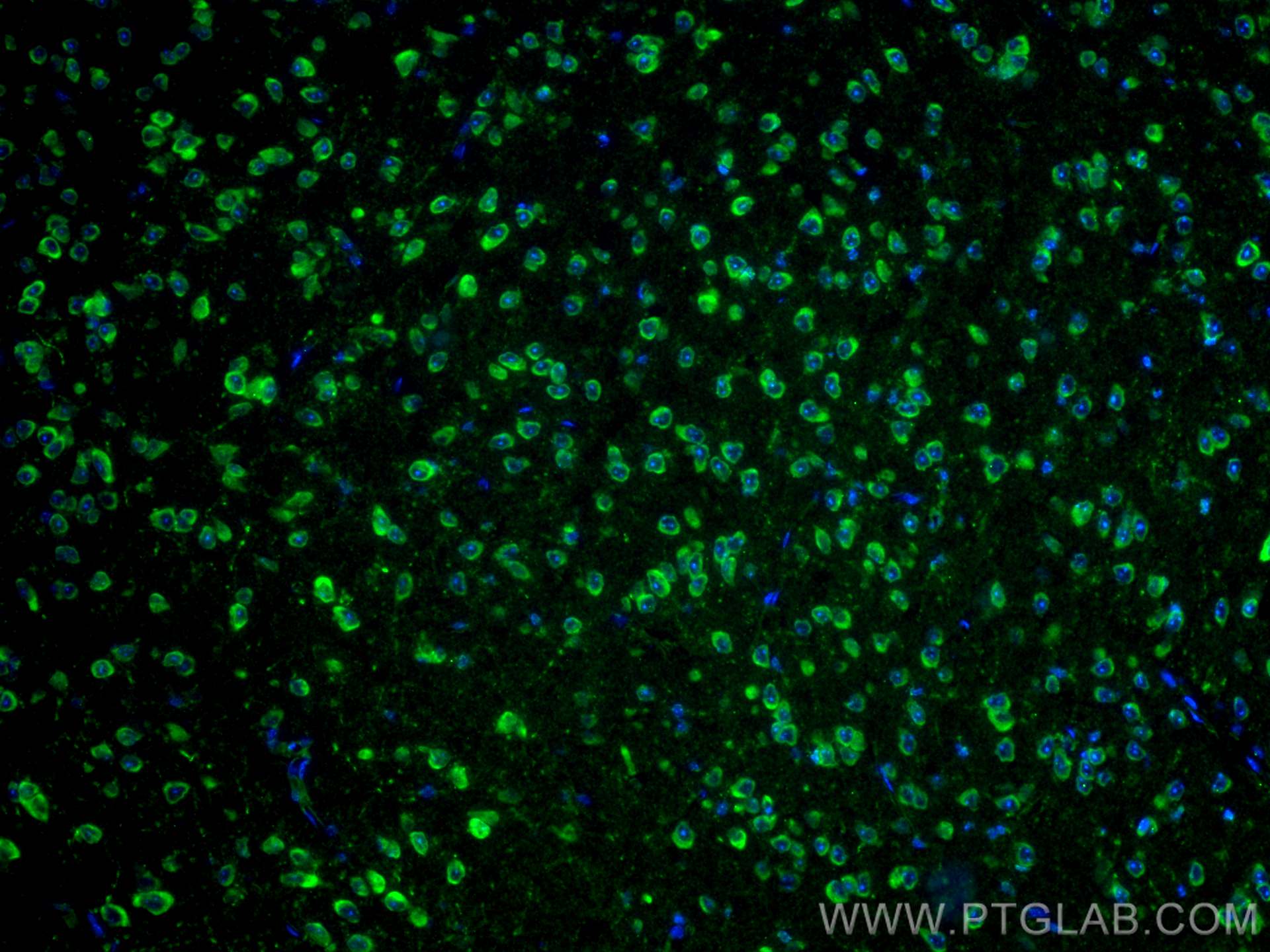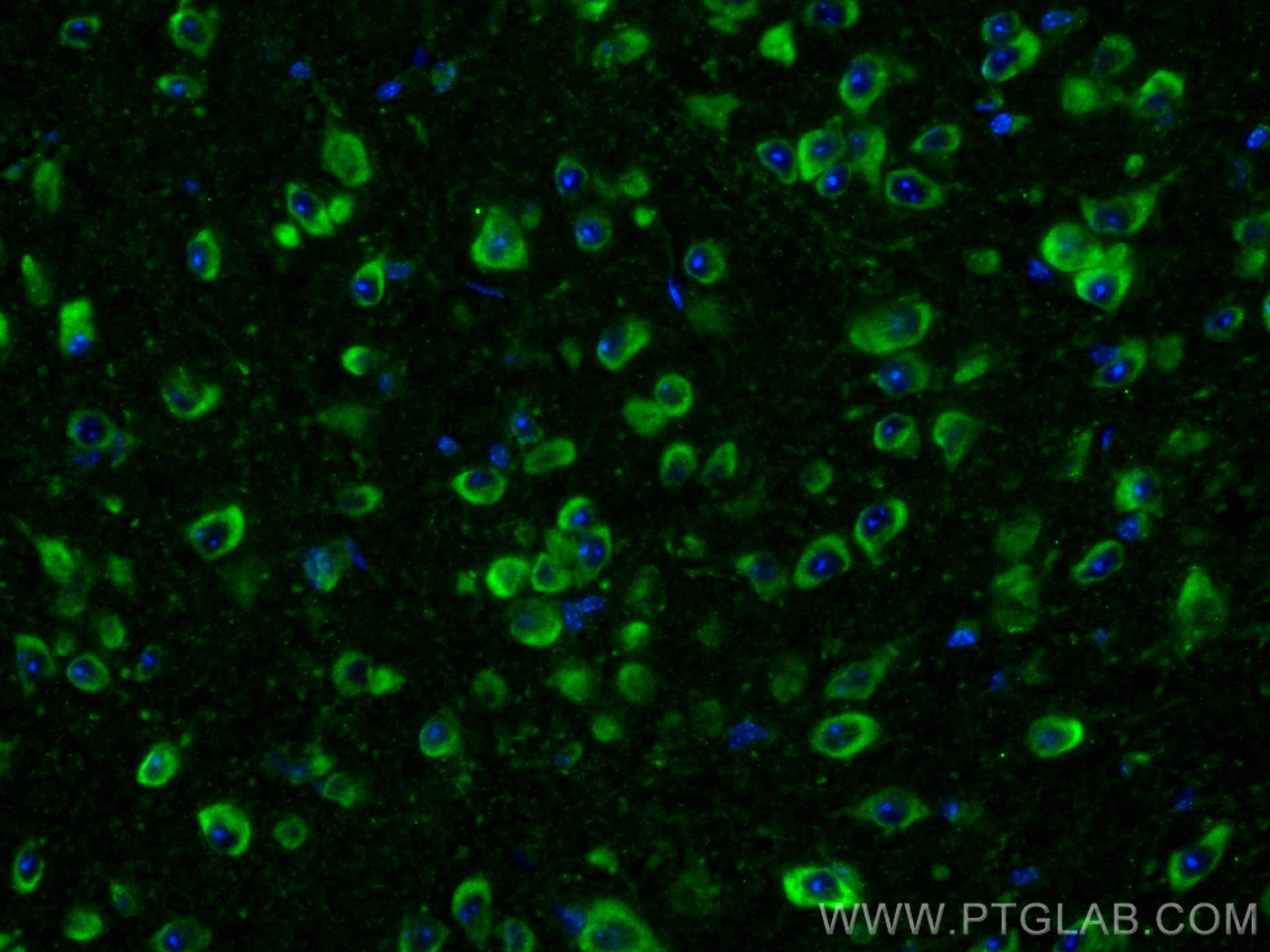Validation Data Gallery
Tested Applications
| Positive IHC detected in | mouse testis tissue, human placenta tissue, rat testis tissue Note: suggested antigen retrieval with TE buffer pH 9.0; (*) Alternatively, antigen retrieval may be performed with citrate buffer pH 6.0 |
| Positive IF-P detected in | mouse brain tissue |
Recommended dilution
| Application | Dilution |
|---|---|
| Immunohistochemistry (IHC) | IHC : 1:50-1:500 |
| Immunofluorescence (IF)-P | IF-P : 1:50-1:500 |
| It is recommended that this reagent should be titrated in each testing system to obtain optimal results. | |
| Sample-dependent, Check data in validation data gallery. | |
Product Information
27761-1-AP targets SALL1 in IHC, IF-P, ELISA applications and shows reactivity with human, mouse, rat samples.
| Tested Reactivity | human, mouse, rat |
| Host / Isotype | Rabbit / IgG |
| Class | Polyclonal |
| Type | Antibody |
| Immunogen | SALL1 fusion protein Ag26766 相同性解析による交差性が予測される生物種 |
| Full Name | sal-like 1 (Drosophila) |
| Calculated molecular weight | 140 kDa |
| Observed molecular weight | 140 kDa |
| GenBank accession number | NM_001127892 |
| Gene Symbol | SALL1 |
| Gene ID (NCBI) | 6299 |
| Conjugate | Unconjugated |
| Form | Liquid |
| Purification Method | Antigen affinity purification |
| UNIPROT ID | Q9NSC2 |
| Storage Buffer | PBS with 0.02% sodium azide and 50% glycerol{{ptg:BufferTemp}}7.3 |
| Storage Conditions | Store at -20°C. Stable for one year after shipment. Aliquoting is unnecessary for -20oC storage. |
Background Information
SALL1(Sal-like protein 1), also known as SAL1. It is located in the cytoplasm and nucleus. The protein is mainly expressed in the kidney. Transcriptional repressor involved in organogenesis. The protein plays an essential role in ureteric bud invasion during kidney development. The molecular weight of SALL1 is 140 kDa.
Protocols
| Product Specific Protocols | |
|---|---|
| IHC protocol for SALL1 antibody 27761-1-AP | Download protocol |
| IF protocol for SALL1 antibody 27761-1-AP | Download protocol |
| Standard Protocols | |
|---|---|
| Click here to view our Standard Protocols |
